
You see the throngs of people standing between you and the ride. You aren’t worried, though. You have an advantage that they don’t.
You confidently approach the line, but you veer at the last moment. The regular entrance is for the ordinary people. You’re one of the chosen few. You even enjoy your own park attendant. You walk up to a Cast Member, and they look at you expectantly. Authoritatively, you raise your arm to show that you belong. With a nod of recognition, the employee confirms that you are a member of the elite. The theme park’s version of the velvet rope lifts, and you enter the much shorter line, for you have…a FastPass!
In that moment, you are the chosen royalty of the Happiest Place on Earth.
In 1999, the geniuses at Disney finally recognized that their exponential growth rate had an unfortunate consequence. Eventually, the lines at their park attractions would grow so long that they would discourage guests from visiting. In order to adapt to this situation, the company’s world-renowned Imagineers crafted a clever solution. They would add secondary lines to their most popular rides and character experiences. The park’s system would control the number of times a guest could enter the second, much shorter line.
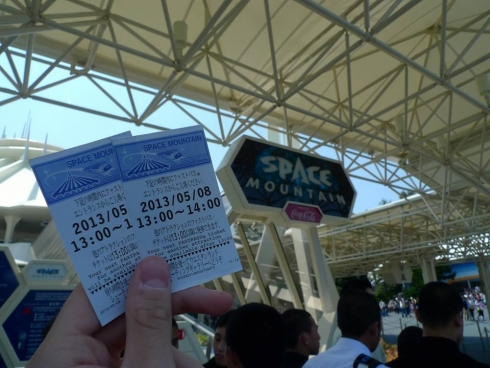
By allowing a few such FastPass usages each visit, Disney guaranteed their visitors would enjoy all their favorite parts of the various theme parks without having to fight the crowd. If you’ve spent any time at one of Disney’s iconic theme parks over the past 16 years, you’ve utilized a FastPass at some point. Have you ever taken a moment to consider how it came into existence or works so cleverly, though?
Let's take a deep dive to learn about the genesis of the FastPass, its evolution across multiple Disney parks throughout the world, and its latest phase as FastPass+.
A growing need…
The first aspect to consider regarding the invention of the FastPass is its purpose. During the late 1990s, the most common complaint Disney received in feedback from guests was wasted time. Rather than enjoying all the restaurants, shops, shows, and attractions available at a theme park, guests across the world vented that they spent far too long stuck waiting in line. Their problem was also Disney’s problem, because people standing in a queue aren’t people buying food, drinks, or souvenirs, which cost Disney tens of thousands of dollars per minute.
In order to alleviate this issue, Imagineers needed a solution that would lessen time spent in line. This puzzle was trickier to crack than you may think. After all, anything they offered to shorten the customer’s wait must be available to everyone. That’s a vicious circle, because the new option would quickly become as congested as the old one. Plus, the idea of adding a second line seemed particularly counterintuitive. All that should accomplish in theory is giving people a different waiting queue. The same park guests are still in the same two lines, making the crowd levels for the attraction identical. So, what’s the enhancement?
The solution was an elegantly simple: design a pass-based system that empowered guests with the ability to virtually wait in line for an attraction without physically doing so. It’s the equivalent of calling for an imaginary baserunner in a backyard baseball game. Getting such a revolutionary process off the ground, however, was not an easy endeavor.
A new tomorrow
1998's attendance report was grim. Disneyland, the American original, claimed 13.68 million in attendance in 1998, which was a troublesome decline of 4 percent from 1997. Walt Disney World’s Magic Kingdom, the most popular theme park in the world, suffered an even stiffer decline of 8 percent to 15.64 million. Epcot and what was then known as Disney-MGM Studios both experienced 10 percent falls to 10.6 million and 9.47 million, respectively. While there are always a multitude of reasons when park attendance fluctuates from year to year, Disney execs had cause for alarm with their 1998 numbers.
With guests telling them that giant attraction queues were a deterrent and park visits dropping at an alarming rate, the company prioritized crowd control solutions. The idea of a velvet rope kind of second line, while daring, fell into place once the Imagineers determined the mechanics.
One of the issues Disney Company has with developing new technologies is how to roll them out in the various parks across the world. The locations all operate differently, so a single concept requires variance and nuance across the distinct facilities. Company employees like to say that the sun never sets on the Disney Empire, a play on historical maxim used for the British and Spanish empires as well as the holdings of Xerxes I of Persia.
Disney never needed to act like bloodthirsty conquistadors to claim their territories. The locals warmly welcomed each invasion, but a change as all-encompassing as a new theme park queue system required a lighter touch. Corporate executives plotted the introduction of FastPass in combination with their most ambitious theme park to date, Animal Kingdom.
Still the world’s largest theme park, the expansive offerings at Animal Kingdom required a new type of thinking by Disney’s Imagineers. In 1998, the company boldly announced the intention to open a new park at each of its existing properties over the next five years. To alleviate the ambition of this goal, they calculated that FastPass would solve the organic crowd concerns at each new location.
Animal Kingdom became the trial run just over a year after its 1998 debut. In July of 1999, the park added a series of kiosks. People with daily tickets or annual passes to Animal Kingdom could approach these FastPass distribution machines, sticking their admission ticket into the designated slot, and then recieving a paper FastPass with a return time.
The system assigned the user with an hour-long window for a ride return later in the day. The only information the paper showed in 1999 was the attraction of choice and the FastPass timeframe. The more advanced data wouldn’t appear for years, when the company acknowledged that there were flaws in the system that they should address by evolving the actual FastPass. Once the guest reached the attraction, a sign reflected the current FastPass printout window. Nearby was another sign displaying the current average waiting period for staying in the standard queue. The belief was that by showing the comparison information, Disney consumers would adopt the new system quickly.
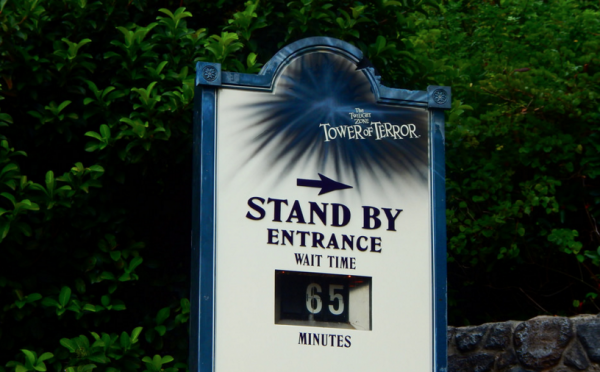
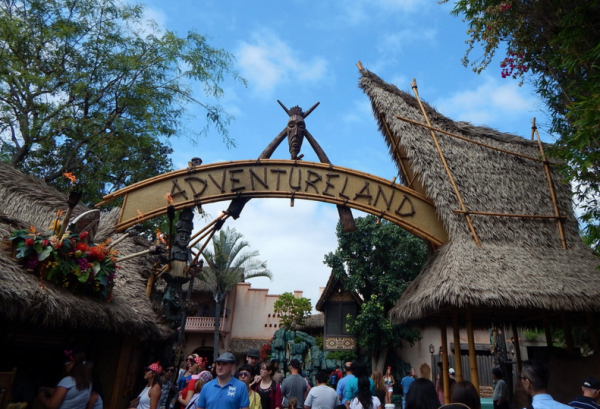
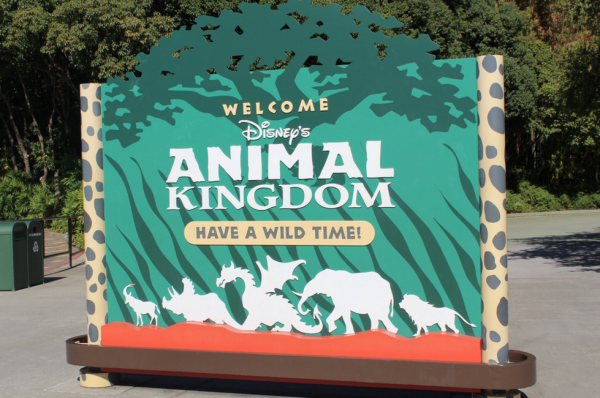
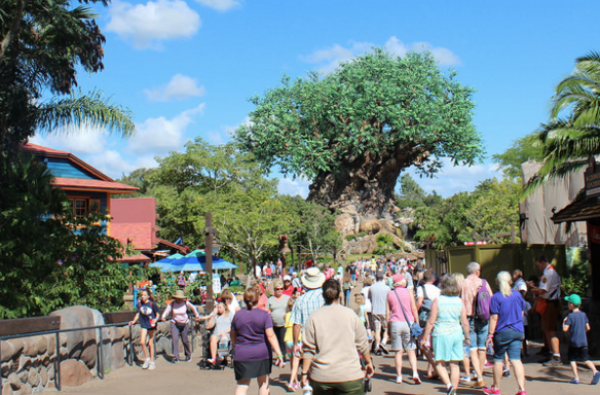

Comments
Was recently at Magic Kingsom and standing in The standby line for the Speedway. The line was moving at a exceptionally slow pace and when I looked up the Fast pass line was jammed and the CM was just letting I go them flow in unregulated. When anyone would come up to the fast pass line they were let in and they were given immediate access to the ride while the standby by line was halted until the fast pass line was empty. This of course never happened and on a Very limited basis ( less then 8 people at a time) were allowed on the ride while the fast pass line just flowed freely. This is the part that bothered me, I asked the CM what was the deal and she said " they have Reservations and as such are given priority"
What!? I was under the impression that Fast pass was to "shorten your wait time but not eliminate it! This is why the Standby waits are getting longer not more people in the parks more promote in the fast pass lines!
i was a clear abuser, or as I like to think of it, optimizer, of the old FastPass system. My family visited under the new system and I realized how packed the place actually is. 8-9 rides per visit? Yuck, and no advantage to staying on property. The Polynesian gives you Monorail access to ... 8-9 rides per day? We did Universal on site with their Express Unlimited pass and got our ride fix in. We love the Disney parks, but will have to decide between riding ride efficiently and waiting in line next time we visit Orlando.
I have been twice on the new fastpass+. I have witnessed what I think is "dumping." In June our 4th pass was to the Jungle Cruise. FP+ line was about 30 min long. Stand by was 45. That's not how it's supposed to work. In Jan of 2014 we were enjoying ice cream on the bridge at Splash when a huge crowd of FP users came upon Big Thunder. The line for just the FP was over the bridge. Is Disney "dumping" FP+ into the system to appease complainers? "Sorry you're having a problem - here's an extra FP to Big Thunder, ma'am."
I did not experience shorter lines either trip. I remain unimpressed.
The issue is that while Disney assigns X number of fast-passes startung every 5 minutes, because a fast-pass is good for 60 minutes, in any given 5-minute period, 1-hour's worth of legitmate fast-pass holders can enter the FP queue. For example, a parade ends at 3:00, and anyone holding a fast-pass from 2:00-3:00 can join the queue. I would hope that when the computers recognize the FP queue filling up, they send a message to the "gate-keeper" to prioritize the FP line.
While being able to choose your fastpass before you step into the park is nice I don't like fastpass+ at all. It is way too random with your choices and you end up having to criss cross the park just so you can make your fastpass times. Whereas before, especially Plus limiting the number of fast passes you can get means that it is now almost impossible to do everything you want to do in a day as you are forced to use stand by lines a lot more than before. And no I don't think you have questionable morals if you take advantage of the system within the rules established by the system. I really doubt that cheating of the fastpass system was really that rampant.